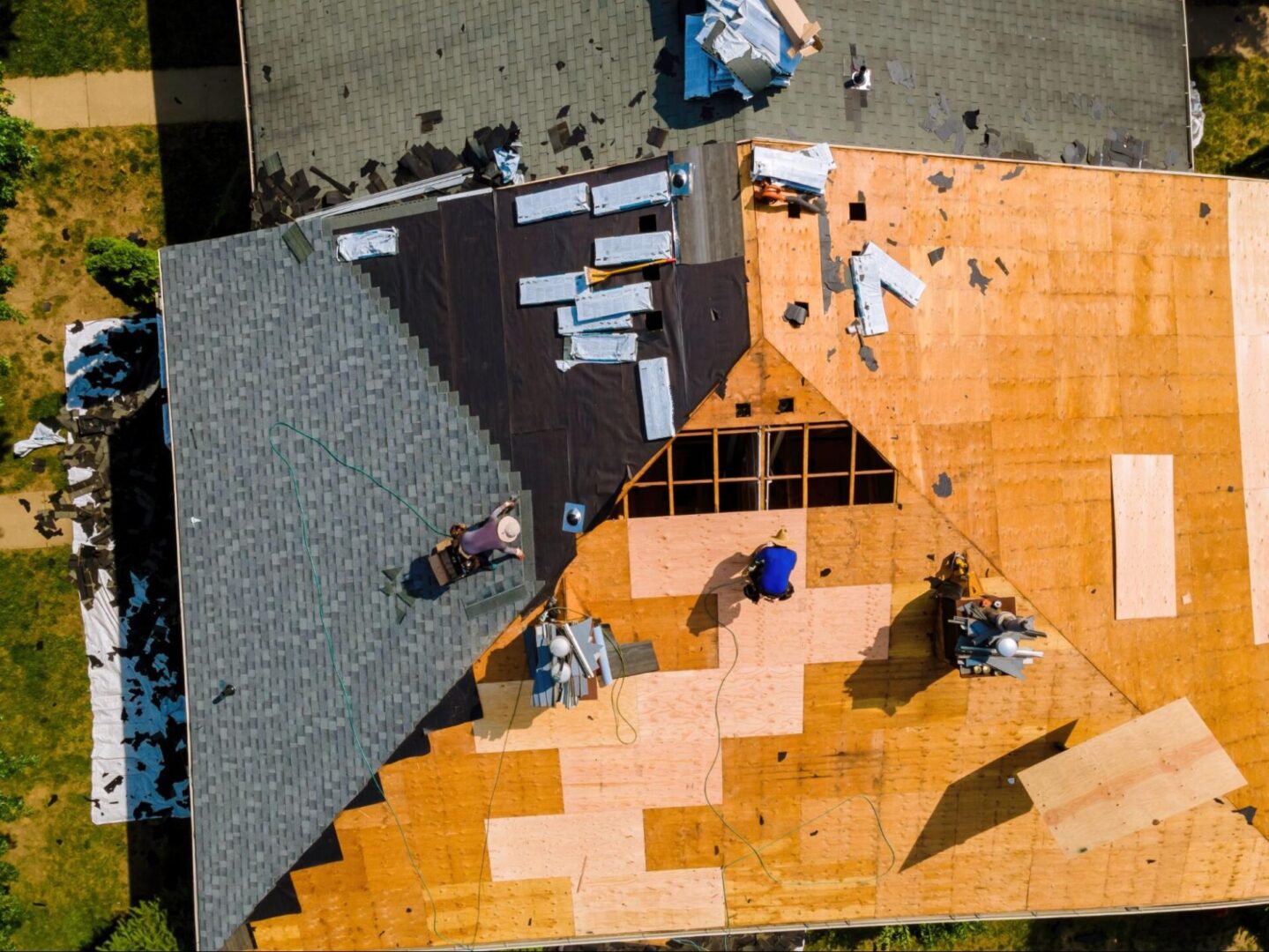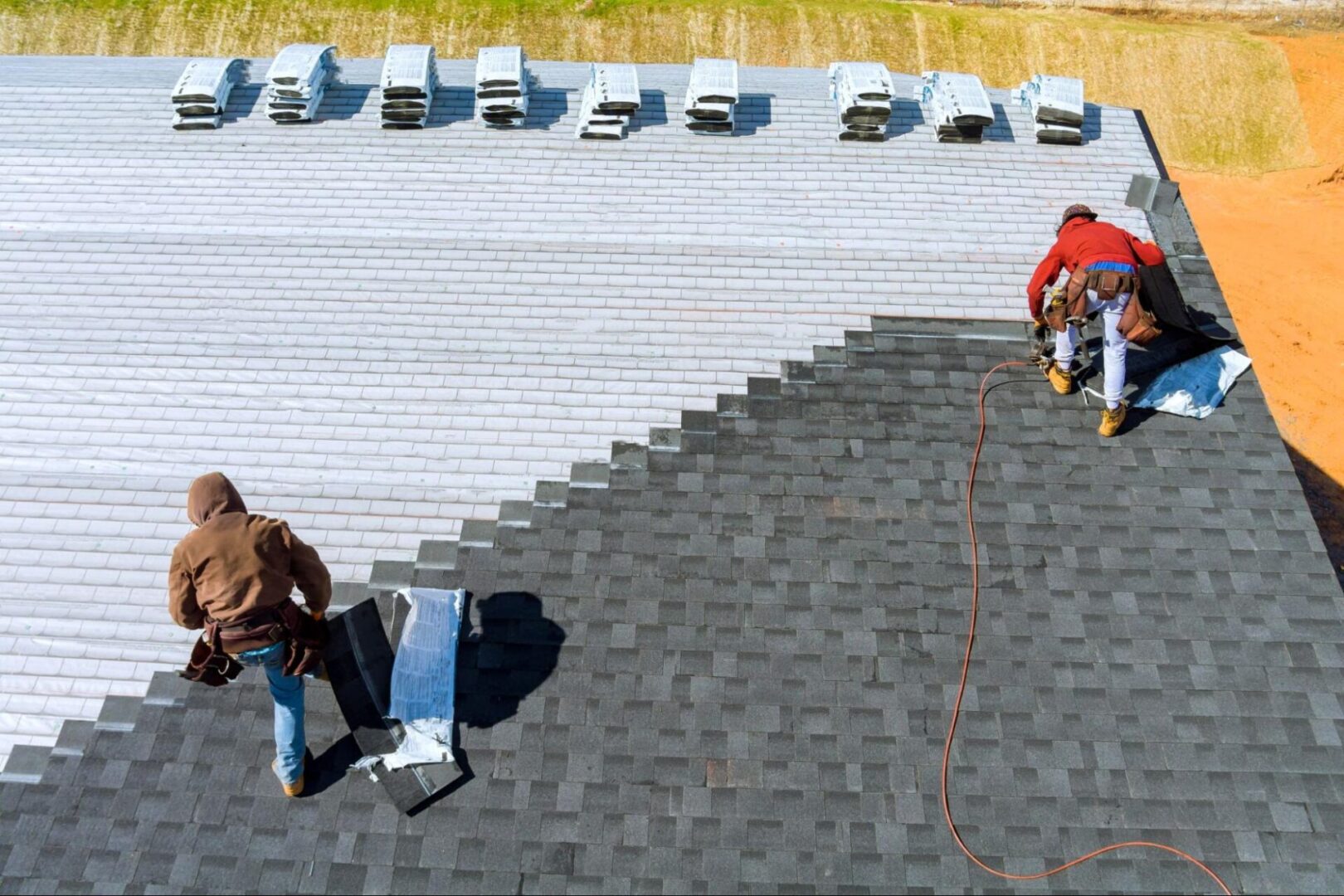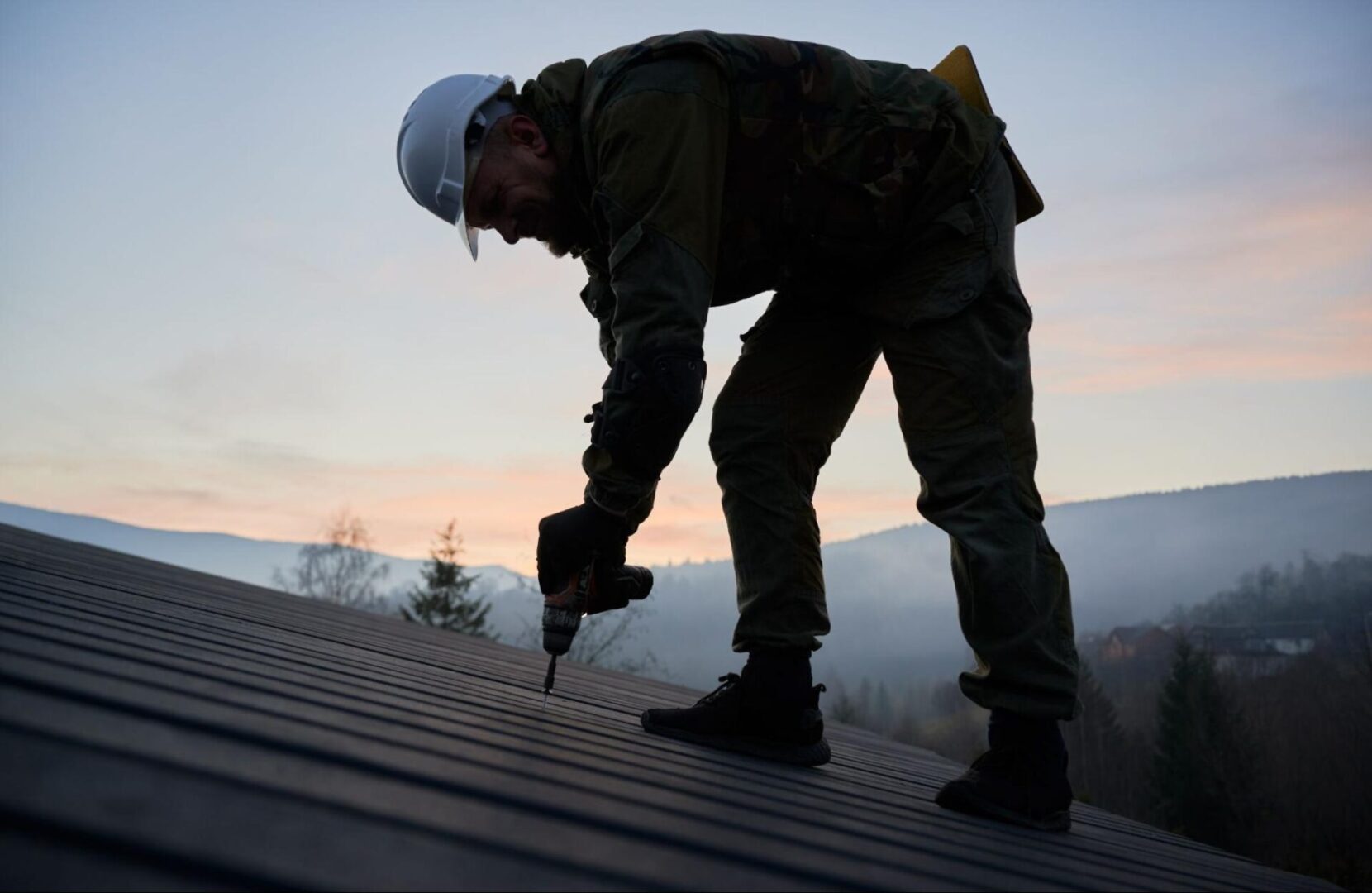
A roof is more than just a cover for your home; it’s your first defense against nature’s forces. It shelters your family, protects your belongings, and plays a pivotal role in maintaining the structure of your house. Beyond protection, the right roof enhances energy efficiency, reduces utility costs, and adds undeniable curb appeal. Making the right choices about roof installations impacts your home’s value and peace of mind. A well-informed approach to roof installations safeguards your home and optimizes its long-term functionality and aesthetic appeal.
Benefits of Roof Installations
Roof installations contribute to a home’s longevity, comfort, and market appeal. They go beyond aesthetics, serving as a cornerstone of protection against weather and structural damage. Homeowners can enjoy energy savings, increased property value, and structural resilience with the right roofing solutions.
Enhances Structural Integrity
A well-installed roof provides a robust barrier against the elements. It prevents water infiltration, reducing the risk of leaks, mold, and wood rot. Using high-quality materials ensures the roof remains solid and reliable for decades. A secure roof protects your home’s structural framework, preventing costly damage.
Boosts Energy Efficiency
Modern roofs can improve energy performance by minimizing heat loss and gain. Advanced materials, like reflective coatings, help maintain comfortable indoor temperatures. Efficient ventilation systems further reduce heating and cooling expenses. These features combine to lower energy bills and create a more sustainable home.
Increases Property Value
Roof installations can significantly enhance a home’s resale value. Potential buyers view new roofs as a sign of a well-maintained property. Warranties provided with modern installations can be a major selling point. Investing in durable, high-quality roofing materials ensures fewer repairs, adding to long-term value.
Types of Roof Installations
Homeowners can access a wide range of roofing options to suit their needs. From cost-effective choices to high-end materials, each type offers unique benefits. The selection process should consider budget, climate, and desired aesthetics.
Asphalt Shingles
Asphalt shingles are among the most popular options for residential roofing. They are affordable, versatile, and available in various colors and textures. With proper care, asphalt shingles can last 20-30 years and resist moderate weather conditions. Regular maintenance, such as cleaning and inspection, prolongs their lifespan.
Metal Roofing
Metal roofing offers superior durability and longevity, often lasting over 50 years. It resists extreme weather conditions, including high winds, heavy snow, and fire. Its lightweight nature makes installing it easier and less taxing on your home’s structure. Metal roofs’ reflective properties also improve energy efficiency, making them a smart choice for eco-conscious homeowners.
Tile Roofing
Tile roofing stands out for its aesthetic appeal and exceptional durability. Made from clay, concrete, or slate, it can last over a century with proper maintenance. Tiles provide excellent insulation, helping homes stay warm in winter and cool in summer. While the upfront costs are higher, their low maintenance and longevity make them a worthwhile investment.
Environmental Considerations in Roofing
Eco-conscious homeowners have many roofing options that minimize environmental impact. Materials like recycled metal or composite shingles reduce waste while offering excellent durability. Green roofs with vegetation provide insulation and contribute to better air quality. Solar-integrated roofing is another sustainable option, combining energy generation with long-lasting performance.

Factors to Consider for Roof Installations
Planning a roof installation involves more than choosing materials. Budget, climate, and contractor selection all influence the outcome. Considering these factors ensures a smoother process and a lasting result.
Budget and Material Costs
Roofing materials vary significantly in cost, from affordable asphalt shingles to premium tiles. Setting a realistic budget helps balance immediate expenses and long-term value. Some materials require additional preparation or specialized labor, increasing installation costs. Investing in durable, high-quality materials reduces maintenance and repair costs over time.
Climate and Weather
Local weather conditions play a critical role in choosing the suitable roofing material. Areas with high heat benefit from reflective materials, while rainy regions require moisture-resistant options. Metal roofs are ideal for snow-prone locations due to their strength and durability. Choosing materials suited to the local climate helps ensure your roof’s longevity.
Professional Installation
Hiring experienced professionals is crucial for proper roof installation. A skilled contractor ensures that the roofing process is done accurately and efficiently. Research contractors carefully, checking licenses, insurance, and past customer reviews. Quality artistry guarantees durability, validates warranties, and reduces future repair risks.
Roof Ventilation and Insulation
Ventilation and insulation are vital to a roof’s overall performance and longevity. Proper ventilation prevents moisture buildup, reducing the risk of mold and wood rot. Quality insulation helps maintain consistent indoor temperatures, improving energy efficiency. Including these elements in your roofing plan ensures a comfortable and durable home environment.
Signs You May Need a New Roof Installation
Timely roof replacement is essential to maintaining a safe and functional home. Ignoring damage can lead to costly repairs and structural issues. Recognizing the warning signs helps homeowners act before problems escalate.
Visible Wear and Tear
Apparent signs of roof damage include missing, cracked, or curled shingles. These issues compromise the roof’s ability to protect against water infiltration. Granule loss from asphalt shingles is another indication of aging materials. Holes or punctures from weather events can lead to immediate leaks, requiring prompt attention.
Interior Damage and Leaks
Water stains on ceilings and walls often point to roofing problems. Sagging areas in the ceiling suggest prolonged water pooling above. Mold or mildew growth inside the home signals persistent leaks. Addressing these issues quickly prevents further structural deterioration and improves indoor air quality.
Age of the Current Roof
The lifespan of a roof varies depending on the material and maintenance. Asphalt shingles typically last between 20 and 30 years, while metal roofs can endure up to 70 years. Regular inspections help identify aging roofs before significant issues arise. Proactively replacing an old roof avoids unexpected repairs and enhances home safety.
How to Prepare for Roof Installations
Preparation ensures a smooth and efficient roof installation process. Proper planning minimizes disruptions and helps homeowners feel confident in the project’sproject’s progress. Taking critical steps before installation begins can save time and avoid unnecessary delays.
Clear the Workspace
Create a safe and accessible area for the roofing crew to work. Move outdoor furniture, decorations, and vehicles away from the home to prevent damage. Clear attics and rooms below the roof to protect belongings from falling debris. Notify neighbors about potential noise and disturbances during the installation period.
Choose the Right Contractor
Selecting the right contractor is critical to achieving a successful roof installation. Research multiple professionals, comparing quotes, credentials, and online reviews. Verify that contractors have the necessary licenses, insurance, and experience for the job. Understanding the contract terms, including warranties and timelines, prevents misunderstandings.

Understand the Installation Process
Discuss the installation process with your contractor to stay informed. Ask about the project timeline, potential disruptions, and material delivery schedules. Ensure you understand any site preparation requirements, such as yard access for equipment. Staying involved throughout the process helps address concerns and ensures satisfactory results.
Roof Installation Timeline and Expectations
Understanding the timeline of a roof installation helps homeowners plan effectively. Most standard roof installations take one to three days, depending on the project’s scope. Weather, material type, and home size can extend this timeline. Discussing the expected duration with your contractor ensures you’re prepared for the disruption and any adjustments.
Understanding Roofing Warranties
Roofing warranties provide essential protection against unexpected problems. Manufacturer warranties cover material defects, while contractor warranties address installation workmanship. Reviewing these terms carefully helps you understand the coverage and any limitations. Having a reliable warranty offers peace of mind and safeguards your investment in the long term.
Preparing for Unexpected Challenges
Roof installations can uncover hidden issues, such as damaged decking or structural problems. Anticipating these challenges ensures the project stays on track. Discussing potential contingencies with your contractor helps you prepare for additional costs. Staying flexible and informed makes unexpected discoveries easier to handle without unnecessary stress.
The Role of Building Codes in Roof Installations
Building codes ensure roof installations meet safety, durability, and legal standards. These regulations, set by local authorities, specify materials, installation methods, and structural requirements tailored to the area’s climate and risks. Compliance ensures your roof is safe, functional, and built to withstand environmental challenges.
Understanding Building Codes
Building codes dictate essential requirements for roofing materials, designs, and installation methods. They protect homes from environmental risks like solid winds, heavy snow, or extreme heat. Local variations ensure roofs are suited to the area’s specific challenges. Adhering to these codes guarantees a roof’s strength and reliability over time.
The Importance of Permits
Permits are essential to building code compliance and provide authorization to begin construction. Reputable contractors typically handle the permitting process, ensuring all requirements are met. Failing to secure permits can lead to fines, failed inspections, or project delays. Having permits in place ensures the installation progresses smoothly and passes final approval.
Hiring Qualified Professionals
Experienced contractors are vital to navigating building codes and ensuring compliance. They understand local regulations and ensure that every aspect of the installation meets standards. Professional expertise minimizes the risk of errors that could result in costly rework. Partnering with a knowledgeable contractor guarantees a safe and legally compliant roof.
Risks of Non-Compliance
Ignoring building codes can result in fines, legal issues, and potential structural failures. Non-compliant roofs may also lower property value and create challenges during resale. Beyond financial risks, improper installations jeopardize the roof’s integrity and your home’s safety. Following building codes ensures a roof that protects your home and maintains its value.
Make Your Roof Installation a Lasting Legacy
Your roof is more than just a structural necessity; it’s an investment in your family’s safety, comfort, and your home’s value. Choosing the right materials, styles, and professionals sets the foundation for decades of protection and peace of mind. Every decision you make, from understanding building codes to avoiding common mistakes, shapes the quality and longevity of your roof. Take the next step today—whether it’s a timely inspection, a conversation with a trusted contractor, or planning for an energy-efficient upgrade—and let your roof installation become a lasting legacy for your home.
Visit our Minnesota’s 1st Choice Replacement Windows and Doors blog to learn about achieving durable, stylish roofs.

